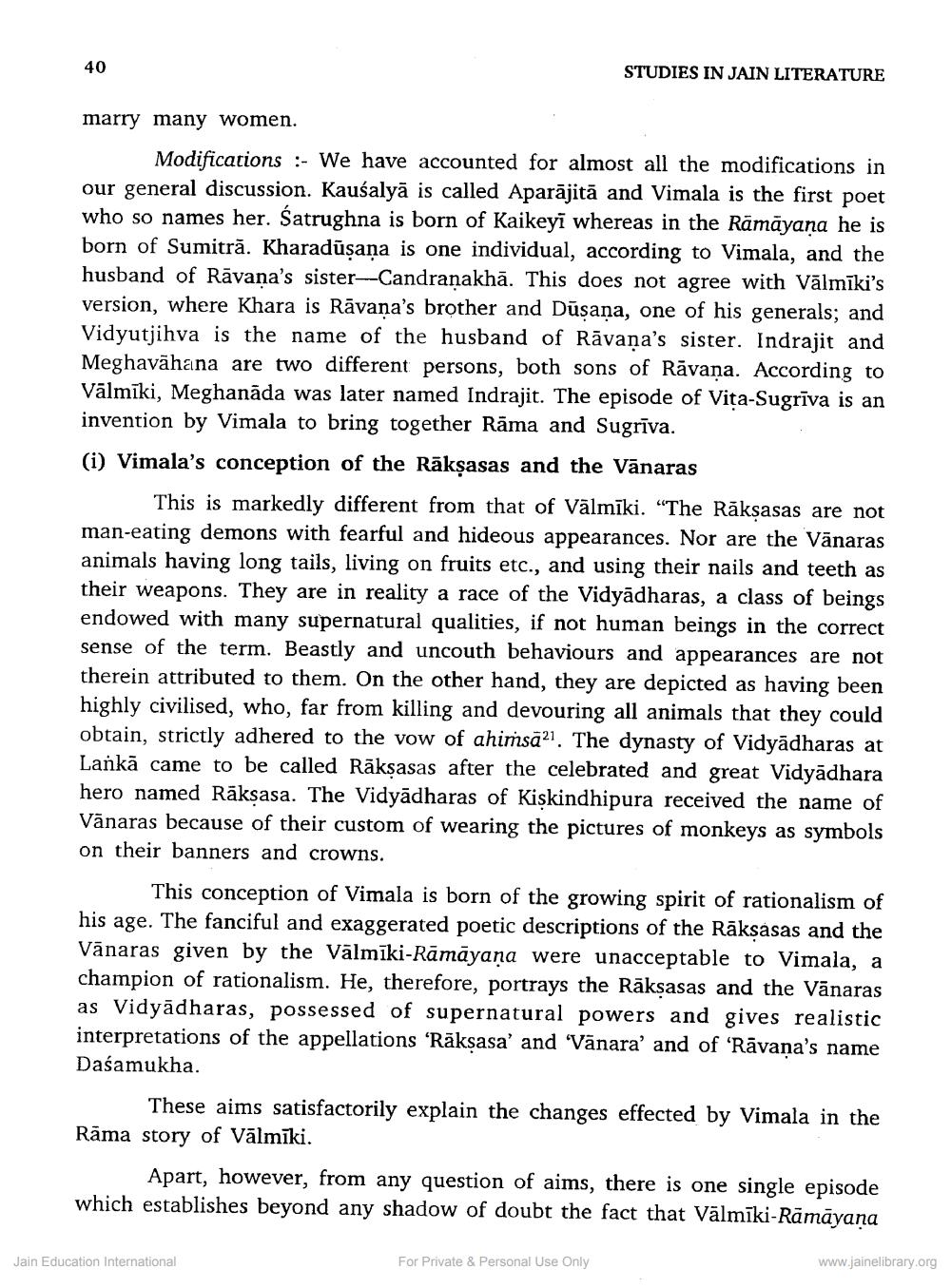________________
40
STUDIES IN JAIN LITERATURE
marry many women.
Modifications :- We have accounted for almost all the modifications in our general discussion. Kausalyā is called Aparājitā and Vimala is the first poet who so names her. Satrughna is born of Kaikeyi whereas in the Rāmāyana he is born of Sumitrā. Kharadūsana is one individual, according to Vimala, and the husband of Rāvana's sister--Candranakhā. This does not agree with Vālmīki's version, where Khara is Rāvana's brother and Dūşana, one of his generals; and Vidyutjihva is the name of the husband of Rāvana's sister. Indrajit and Meghavāhana are two different persons, both sons of Rāvana. According to Vālmīki, Meghanāda was later named Indrajit. The episode of Vita-Sugrīva is an invention by Vimala to bring together Rāma and Sugrīva.
(i) Vimala's conception of the Rāksasas and the Vānaras
This is markedly different from that of Vālmīki. "The Rāksasas are not man-eating demons with fearful and hideous appearances. Nor are the Vānaras animals having long tails, living on fruits etc., and using their nails and teeth as their weapons. They are in reality a race of the Vidyādharas, a class of beings endowed with many supernatural qualities, if not human beings in the correct sense of the term. Beastly and uncouth behaviours and appearances are not therein attributed to them. On the other hand, they are depicted as having been highly civilised, who, far from killing and devouring all animals that they could obtain, strictly adhered to the vow of ahimsa21The dynasty of Vidyadharas at Lankā came to be called Rāksasas after the celebrated and great Vidyadhara hero named Rāksasa. The Vidyādharas of Kiskindhipura received the name of Vānaras because of their custom of wearing the pictures of monkeys as symbols on their banners and crowns.
This conception of Vimala is born of the growing spirit of rationalism of his age. The fanciful and exaggerated poetic descriptions of the Rāksasas and the Vānaras given by the Vālmīki-Rāmāyana were unacceptable to Vimala, a champion of rationalism. He, therefore, portrays the Rāksasas and the Vānaras as Vidyādharas, possessed of supernatural powers and gives realistic interpretations of the appellations "Räksasa' and 'Vānara’ and of 'Rāvana's name Dasamukha.
These aims satisfactorily explain the changes effected by Vimala in the Rāma story of Vālmīki.
Apart, however, from any question of aims, there is one single episode which establishes beyond any shadow of doubt the fact that Vālmīki-Rāmāyaṇa
www.jainelibrary.org
For Private & Personal Use Only
Jain Education International




